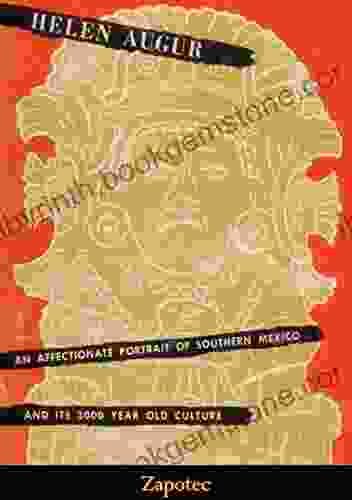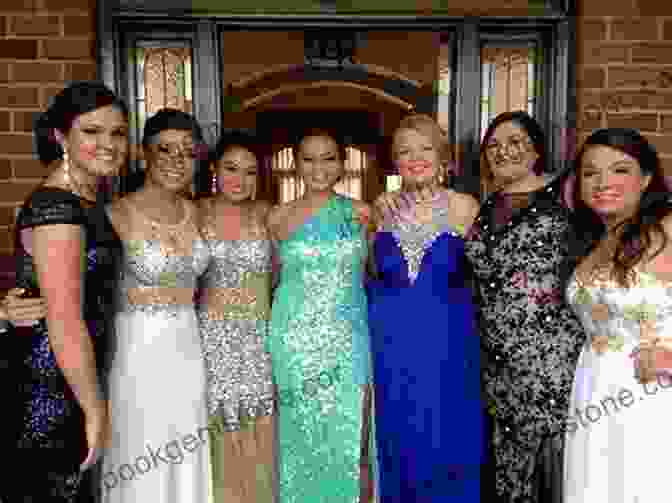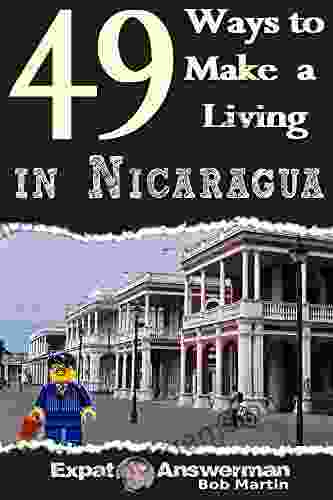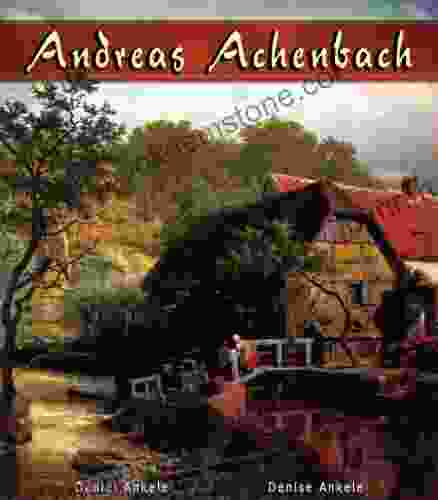The Haunting History of "The Girls Who Went Away": America's Forgotten Residential Schools for Unwed Mothers

Hidden within the tapestry of American history lies a somber chapter, a story of forgotten lives and shattered dreams. Throughout the 20th century, a network of residential schools, known as "maternity homes" or "rescue homes," operated across the country, confining thousands of unwed mothers and their children. These institutions, often veiled in secrecy and shame, became the backdrop for a harrowing chapter that has largely faded from collective memory.
Origins and Ideology
The origins of these residential schools can be traced back to the late 19th century, when societal attitudes towards unwed motherhood were shaped by a rigid moral code. Premarital sex was widely condemned, and women who found themselves pregnant outside of marriage faced severe social ostracism. In response to this perceived crisis, charitable organizations and religious groups established homes where these young women could give birth in secrecy and anonymity.
4.7 out of 5
| Language | : | English |
| File size | : | 1320 KB |
| Text-to-Speech | : | Enabled |
| Screen Reader | : | Supported |
| Enhanced typesetting | : | Enabled |
| X-Ray | : | Enabled |
| Word Wise | : | Enabled |
| Print length | : | 368 pages |
The ideology underpinning these institutions was a complex blend of Victorian morality, eugenics, and social control. Unwed mothers were often seen as morally deficient and in need of correction. Maternity homes aimed to rehabilitate these young women, instill discipline, and facilitate their eventual return to a "respectable" life. However, this facade of rehabilitation often masked a reality of abuse, exploitation, and coercion.
Life Inside the Homes
The daily lives of residents in maternity homes were strictly regimented and often punitive. Young women were subjected to harsh discipline, enforced silence, and constant surveillance. They were forced to work long hours in laundries or sewing rooms, and any perceived transgressions were met with harsh punishments, including physical abuse.
The children born in these homes faced an equally grim fate. They were often taken from their mothers shortly after birth and placed in foster care or adoption. Some of these children were raised in institutions, where they were subjected to similar abuse and neglect as their mothers.
Eugenics and Forced Adoptions
As the 20th century progressed, the ideology of eugenics gained traction in the United States. Eugenics, the belief that the human race could be improved through selective breeding, led to the forced sterilization of hundreds of thousands of Americans, including many unwed mothers in maternity homes.
Forced adoptions also became a common practice in these institutions. Adoptive parents were often wealthy and white, and they preferred healthy, white babies. As a result, many mothers of color were pressured to give up their children, even if they did not wish to do so.
The Long-Term Impact
The horrors of maternity homes have left an enduring legacy of trauma and broken lives. Former residents have reported experiencing lifelong psychological distress, including post-traumatic stress disorder, depression, and anxiety. Many struggled to form healthy relationships and struggled with addiction.
The children born in these homes have also faced challenges, including mental health issues, identity confusion, and difficulty tracing their biological families. Forced adoption has had a profound and lasting impact on their sense of belonging and self-esteem.
Uncovering the Hidden History
For decades, the story of maternity homes remained largely hidden from public view. Survivors were often silenced by shame or fear of retaliation. However, in recent years, a growing number of former residents have come forward to share their experiences, sparking a national reckoning with this dark chapter in American history.
Researchers and historians have also delved into the archives, uncovering the extent of the abuse and exploitation that took place within these institutions. The work of organizations such as the National Archive on Forced Sterilization and the Forgotten Children and Adopted People Remembrance Day has raised awareness and helped to give voice to the victims.
Reckoning and Reconciliation
As the hidden history of maternity homes comes to light, there is a growing movement for reconciliation and healing. Former residents are demanding apologies and compensation for the wrongs they have suffered. States and religious organizations are beginning to acknowledge their role in these institutions and are offering support to survivors.
There is also a need for a national dialogue about the lasting impact of unwed motherhood stigma and the systemic barriers that continue to face unmarried parents today. By confronting the past and addressing these ongoing issues, we can work towards a future where all people have the opportunity to live with dignity and respect.
The story of "The Girls Who Went Away" is a haunting reminder of the dark side of American history. It is a testament to the power of shame and prejudice to inflict unspeakable suffering on the most vulnerable members of our society. However, it is also a story of survival, resilience, and the enduring search for justice.
As we continue to uncover the hidden truths of our past, let us commit ourselves to learning from these mistakes and to ensuring that such horrors never happen again. By listening to the voices of survivors, acknowledging the pain they have endured, and taking steps towards reconciliation, we can create a society where all people are valued and respected, regardless of their circumstances.
4.7 out of 5
| Language | : | English |
| File size | : | 1320 KB |
| Text-to-Speech | : | Enabled |
| Screen Reader | : | Supported |
| Enhanced typesetting | : | Enabled |
| X-Ray | : | Enabled |
| Word Wise | : | Enabled |
| Print length | : | 368 pages |
Do you want to contribute by writing guest posts on this blog?
Please contact us and send us a resume of previous articles that you have written.
 Best Book
Best Book Page Flip
Page Flip Bookshelf
Bookshelf Literary loom
Literary loom Chapter
Chapter Bookish
Bookish PageTurner
PageTurner Bibliophile
Bibliophile Story
Story Inkwell
Inkwell Bookworm
Bookworm Labyrinth
Labyrinth Plot Twist
Plot Twist Prose
Prose Paperback
Paperback Storyteller
Storyteller Sanctuary
Sanctuary Fiction
Fiction Reading
Reading Chronicle
Chronicle Read
Read Ronald G Knapp
Ronald G Knapp Jerry Beck
Jerry Beck James Rubik
James Rubik Craig Ferguson
Craig Ferguson Rebecca Hardiman
Rebecca Hardiman Frances Dinkelspiel
Frances Dinkelspiel Nigel Barley
Nigel Barley Sarah Culberson
Sarah Culberson Leila Guerriero
Leila Guerriero Crispin Sartwell
Crispin Sartwell Andrew Patrick Nelson
Andrew Patrick Nelson Pierre Alex Jeanty
Pierre Alex Jeanty Robert Isenberg
Robert Isenberg Maya Angelou
Maya Angelou S M Anderson
S M Anderson Clifford Irving
Clifford Irving George Saunders
George Saunders Julie Lythcott Haims
Julie Lythcott Haims Cynthia Saltzman
Cynthia Saltzman Leslie Cabarga
Leslie Cabarga R P Jones
R P Jones Colin Souness
Colin Souness Xinran
Xinran James Alan Gardner
James Alan Gardner Terry Darlington
Terry Darlington Steve Huston
Steve Huston Dan Grunfeld
Dan Grunfeld Yair Lapid
Yair Lapid Diana Friel Mcgowin
Diana Friel Mcgowin Synithia Williams
Synithia Williams Massimiliano Musina
Massimiliano Musina David Drake
David Drake Jeremy Robert Johnson
Jeremy Robert Johnson Colleen Hall
Colleen Hall Connie Malamed
Connie Malamed Craig Melvin
Craig Melvin Thrive Language Audiobooks
Thrive Language Audiobooks Jeremy Ford
Jeremy Ford Xiaolu Guo
Xiaolu Guo Luca Turin
Luca Turin Cristina Salat
Cristina Salat Courtney Ragsdale
Courtney Ragsdale Gene Wolfe
Gene Wolfe Stephen Armstrong
Stephen Armstrong Susan Yeates
Susan Yeates Prince
Prince Porochista Khakpour
Porochista Khakpour Hayley Stone
Hayley Stone Mary Alice Monroe
Mary Alice Monroe Roberto Pedreira
Roberto Pedreira D J Bodden
D J Bodden Lisa Morton
Lisa Morton Gerda Weissmann Klein
Gerda Weissmann Klein L E Modesitt Jr
L E Modesitt Jr David Cousens
David Cousens Pat Grillo
Pat Grillo Hannah Hart
Hannah Hart Craig Carey
Craig Carey Loretta Outwater Cox
Loretta Outwater Cox Robert Silverberg
Robert Silverberg D Dauphinee
D Dauphinee June Emerson
June Emerson Michael Shnayerson
Michael Shnayerson Serena Gilbert
Serena Gilbert Dale Robinson
Dale Robinson Marc Canter
Marc Canter Michael Henry
Michael Henry Diana Hollingsworth Gessler
Diana Hollingsworth Gessler Culture Smart
Culture Smart Dani Dyer
Dani Dyer Ward Larsen
Ward Larsen Joshua M Greene
Joshua M Greene Elizabeth Reid
Elizabeth Reid Mary Paik Lee
Mary Paik Lee Carrie Stuart Parks
Carrie Stuart Parks Daniel Ankele
Daniel Ankele Ian Whitaker
Ian Whitaker Ben Ohmart
Ben Ohmart Frank Bruni
Frank Bruni Tony Pike
Tony Pike Brandon Q Morris
Brandon Q Morris Cyrus Highsmith
Cyrus Highsmith Cookie Johnson
Cookie Johnson Janet Koplos
Janet Koplos Brad Olsen
Brad Olsen Sujean Rim
Sujean Rim John Grisham
John Grisham Garry Mcgee
Garry Mcgee Irene Aylworth Douglass
Irene Aylworth Douglass Jason M Hough
Jason M Hough Pat Kramer
Pat Kramer Edward Johnston
Edward Johnston Coryn Anaya Clarke
Coryn Anaya Clarke Gianrico Carofiglio
Gianrico Carofiglio Marc Taro Holmes
Marc Taro Holmes Corky Parker
Corky Parker Hannah Strong
Hannah Strong Dan Diggles
Dan Diggles Joshua T Calvert
Joshua T Calvert Daniel Burleigh Parkhurst
Daniel Burleigh Parkhurst Colin Jones
Colin Jones Lorraine Bartlett
Lorraine Bartlett Dakota Krout
Dakota Krout Douglas Century
Douglas Century Conn Iggulden
Conn Iggulden Chris Strodder
Chris Strodder Bill Geist
Bill Geist Jordan Matter
Jordan Matter Iris Apfel
Iris Apfel Les Standiford
Les Standiford Ernst Bergen
Ernst Bergen Mark Dawson
Mark Dawson Michael Reardon
Michael Reardon Laurent Dubois
Laurent Dubois Elizabeth May
Elizabeth May Joe Starita
Joe Starita Janet Catherine Berlo
Janet Catherine Berlo T R Napper
T R Napper J J Green
J J Green Olan Thorensen
Olan Thorensen Coryne Hall
Coryne Hall G B Edwards
G B Edwards R Allen Chappell
R Allen Chappell Tim Judah
Tim Judah T Scott Bryan
T Scott Bryan Clive Cussler
Clive Cussler Dalai Lama
Dalai Lama David Walton
David Walton Yoko Hatta
Yoko Hatta Helen Armstrong
Helen Armstrong Cricut Maker
Cricut Maker Eric Trueheart
Eric Trueheart William Evans
William Evans Cornelius Tacitus
Cornelius Tacitus Mike Katz
Mike Katz Joy Castro
Joy Castro Jay Ryan
Jay Ryan Jennifer M Eaton
Jennifer M Eaton Lisanne Norman
Lisanne Norman T J S George
T J S George Criss Angel
Criss Angel Amaya Black
Amaya Black Nick Lyons
Nick Lyons Douglas Preston
Douglas Preston Carlos M N Eire
Carlos M N Eire Henry James
Henry James John Tanner
John Tanner Kristina Evans
Kristina Evans Sasha Duerr
Sasha Duerr Tim Vernooij
Tim Vernooij Kevin J Anderson
Kevin J Anderson Henry Koster
Henry Koster Daily Language Learning
Daily Language Learning David Kroese
David Kroese Susan Hayes
Susan Hayes Torre Deroche
Torre Deroche Sue Tabashnik
Sue Tabashnik Sue Monk Kidd
Sue Monk Kidd Jason Cochran
Jason Cochran Tom Poland
Tom Poland Gabrielle Selz
Gabrielle Selz Clementina Oluchi Augustine
Clementina Oluchi Augustine Tracy Lambert
Tracy Lambert Kate Moore
Kate Moore Scott Moon
Scott Moon Rory Miller
Rory Miller Cynthia Leal Massey
Cynthia Leal Massey Olivia Campbell
Olivia Campbell Niall Teasdale
Niall Teasdale Yunte Huang
Yunte Huang Peter Parnell
Peter Parnell Baby Professor
Baby Professor Helen Augur
Helen Augur David W Galenson
David W Galenson Nancey Cummings
Nancey Cummings Ronald Pratt
Ronald Pratt Eric Musgrave
Eric Musgrave Jodi Picoult
Jodi Picoult Stephen Brooks
Stephen Brooks Kirstin Dow
Kirstin Dow Jon May
Jon May Lisa Yaszek
Lisa Yaszek Mark Cramer
Mark Cramer Marko Kloos
Marko Kloos Victor Villasenor
Victor Villasenor Matthew Quirk
Matthew Quirk Colson Whitehead
Colson Whitehead Cora Tesheira
Cora Tesheira Damion Hunter
Damion Hunter Terri Kozlowski
Terri Kozlowski Irving Layton
Irving Layton Co Spinhoven
Co Spinhoven Roy Simmons
Roy Simmons David Riley
David Riley Cristy C Road
Cristy C Road Peter Ninnes
Peter Ninnes Dan Sugralinov
Dan Sugralinov Sean Williams
Sean Williams Daigo Murasaki
Daigo Murasaki Dale Brown
Dale Brown Craig Seymour
Craig Seymour L A Braun
L A Braun Irene Levin Berman
Irene Levin Berman Kathryn Mcmaster
Kathryn Mcmaster Lin Wellford
Lin Wellford Susan Linden Emde
Susan Linden Emde Wade Motawi
Wade Motawi Fiona Ferris
Fiona Ferris Emma Larkin
Emma Larkin Steven Collins
Steven Collins Domnica Radulescu
Domnica Radulescu David Bischoff
David Bischoff Keith Recker
Keith Recker Colin Thubron
Colin Thubron Dan Bigley
Dan Bigley Paula Giddings
Paula Giddings Grady Hendrix
Grady Hendrix Gina Mckinnon
Gina Mckinnon Donna Jackson Nakazawa
Donna Jackson Nakazawa Dan Simmons
Dan Simmons Sean Hartlieb
Sean Hartlieb Ketut Suasti
Ketut Suasti Karen Cheung
Karen Cheung Margaret Fletcher
Margaret Fletcher Steven Skaggs
Steven Skaggs Harry Lorayne
Harry Lorayne James Seabright
James Seabright Parvati Sharma
Parvati Sharma Donald Spoto
Donald Spoto Cynthia Newcomer Daniel
Cynthia Newcomer Daniel Natasha Sims
Natasha Sims Mia Black
Mia Black Kristen Britain
Kristen Britain Clyde D Souza
Clyde D Souza Dakota James
Dakota James Taylor Fuller
Taylor Fuller Hal Vaughan
Hal Vaughan Khadizhat Witt
Khadizhat Witt Steve Reifenberg
Steve Reifenberg Sandee Cohen
Sandee Cohen Mitsuo Kure
Mitsuo Kure T J Clark
T J Clark Linda Riesenberg Fisler
Linda Riesenberg Fisler Isadora Duncan
Isadora Duncan William Schoell
William Schoell David G Hartwell
David G Hartwell John Logan
John Logan Gael Berton
Gael Berton Diane Cardaci
Diane Cardaci Jessica Kerwin Jenkins
Jessica Kerwin Jenkins Denise Hamilton
Denise Hamilton Sarah Jackson
Sarah Jackson J C Romero
J C Romero Eat Like A Local
Eat Like A Local Ella Barrick
Ella Barrick Dan X Solo
Dan X Solo Dallen J Timothy
Dallen J Timothy Marius Kociejowski
Marius Kociejowski Ron Celano
Ron Celano John Mcwade
John Mcwade Marisol Enchufa
Marisol Enchufa Roy Kinnard
Roy Kinnard James Patterson
James Patterson Jon Breakfield
Jon Breakfield James Rosenquist
James Rosenquist Danica Roem
Danica Roem Daniel L Bray
Daniel L Bray S A Snyder
S A Snyder Daniel Abraham
Daniel Abraham David Mikics
David Mikics Collins Dictionaries
Collins Dictionaries Cyril W Beaumont
Cyril W Beaumont Clive Johnson
Clive Johnson Harold P Howard
Harold P Howard Karen Swan
Karen Swan Cookie Mueller
Cookie Mueller Steve Biddle
Steve Biddle Craig A Falconer
Craig A Falconer Tom Hill
Tom Hill K C Jones
K C Jones D Scott Bowers
D Scott Bowers Nawoko
Nawoko Sam Branson
Sam Branson Megan Lynch
Megan Lynch Craig Martelle
Craig Martelle Blair Polly
Blair Polly Marya Hornbacher
Marya Hornbacher Peter Hanson
Peter Hanson Karen Stocker
Karen Stocker Myriam Gurba
Myriam Gurba Lan Sluder
Lan Sluder Minal Hajratwala
Minal Hajratwala David Maraniss
David Maraniss Joy Deja King
Joy Deja King Grace Barrington Shaw
Grace Barrington Shaw Fiona Davis
Fiona Davis Cliff Mass
Cliff Mass Kelly Gay
Kelly Gay Jacques D Amboise
Jacques D Amboise John Humphries
John Humphries Ursula K Le Guin
Ursula K Le Guin Ernest J Gaines
Ernest J Gaines Eric Lax
Eric Lax J Robert Kennedy
J Robert Kennedy Norman Hathaway
Norman Hathaway Sean Egan
Sean Egan Connie Willis
Connie Willis Neal Stephenson
Neal Stephenson D K Holmberg
D K Holmberg Nancy Marchant
Nancy Marchant Jane Hamilton
Jane Hamilton Issa Rae
Issa Rae J Z Foster
J Z Foster David E Wilkins
David E Wilkins Dan Popp
Dan Popp Yutaka Yazawa
Yutaka Yazawa Dr Quinta
Dr Quinta Gerry Virtue
Gerry Virtue D Ward Cornell
D Ward Cornell Lina Rather
Lina Rather Cyn Alexander
Cyn Alexander Twyla Tharp
Twyla Tharp Max Allan Collins
Max Allan Collins Mark Bourrie
Mark Bourrie Carl Sagan
Carl Sagan Eleanor Ford
Eleanor Ford Rami Yelda
Rami Yelda Luis Alberto Urrea
Luis Alberto Urrea Melissa Stephenson
Melissa Stephenson Todd Geers
Todd Geers Craig Briggs
Craig Briggs John Paul Brammer
John Paul Brammer Nick Jans
Nick Jans True Kelley
True Kelley Danielle Krysa
Danielle Krysa Dave Willmarth
Dave Willmarth Nicolas Lampert
Nicolas Lampert Deanna Amodeo
Deanna Amodeo Jim Hutchinson
Jim Hutchinson Jennifer Thompson Cannino
Jennifer Thompson Cannino Cp Mchugh
Cp Mchugh Jeromy Hopgood
Jeromy Hopgood Michelle Damiani
Michelle Damiani Margaret Coker
Margaret Coker Lorne Ryburn
Lorne Ryburn Julia Chiles
Julia Chiles John Luther Adams
John Luther Adams Curatoria Draconis
Curatoria Draconis Darren Critchley
Darren Critchley Henning Nelms
Henning Nelms Virginia Matheson Hooker
Virginia Matheson Hooker Warren Murphy
Warren Murphy Dana Facaros
Dana Facaros Sarena Ulibarri
Sarena Ulibarri Isabella Maldonado
Isabella Maldonado Coralie Bickford Smith
Coralie Bickford Smith Dick J Reavis
Dick J Reavis J A Johnstone
J A Johnstone Mia Michaels
Mia Michaels Dana Sachs
Dana Sachs Meredith Little
Meredith Little Jaclyn Bailie
Jaclyn Bailie Dennis Lehane
Dennis Lehane Dallas Shaw
Dallas Shaw Rayna Tyler
Rayna Tyler Jeffrey Alford
Jeffrey Alford Ellie Taylor
Ellie Taylor Saad Z Hossain
Saad Z Hossain Robert Appleton
Robert Appleton Sara Ackerman
Sara Ackerman Ann Fessler
Ann Fessler Liza Rodman
Liza Rodman Joan Didion
Joan Didion Theo Dorgan
Theo Dorgan Kenya Clark
Kenya Clark Em Brown
Em Brown P A Piatt
P A Piatt Tom Satterly
Tom Satterly Mancho Soto
Mancho Soto Graham Wilson
Graham Wilson Piera Sonnino
Piera Sonnino Geoff Saunders
Geoff Saunders Dennis Valder
Dennis Valder Dan Abnett
Dan Abnett Jane Sutcliffe
Jane Sutcliffe Siri Hustvedt
Siri Hustvedt Dahlma Llanos Figueroa
Dahlma Llanos Figueroa Cornelius N Grove
Cornelius N Grove Ted Andrews
Ted Andrews Clayton Thomas Muller
Clayton Thomas Muller Dk Eyewitness
Dk Eyewitness Bob Martin
Bob Martin Cristela Alonzo
Cristela Alonzo Maggie Rowe
Maggie Rowe Yelapa Memo
Yelapa Memo Tinia Montford
Tinia Montford Robert E Innis
Robert E Innis Fred Ladd
Fred Ladd John Baxter
John Baxter Eric Jerome Dickey
Eric Jerome Dickey Cynthia Clampitt
Cynthia Clampitt Love Belvin
Love Belvin Yuri Ulengov
Yuri Ulengov Richard East
Richard East Monika Forsberg
Monika Forsberg Explorer Publishing
Explorer Publishing Kristina Mcmorris
Kristina Mcmorris Ingrid Sischy
Ingrid Sischy Philip Simmons
Philip Simmons Lee Feigon
Lee Feigon Craig W Stanfill
Craig W Stanfill D J Holmes
D J Holmes Grace Goodwin
Grace Goodwin Kati Marton
Kati Marton Karolyn Kiisel
Karolyn Kiisel Donna Zakowska
Donna Zakowska Gina Yashere
Gina Yashere Mary Boone
Mary Boone Jerry Brotton
Jerry Brotton Dan Gheno
Dan Gheno Alexa West
Alexa West Nelson Demille
Nelson Demille Joan D Vinge
Joan D Vinge Connie Mcbride
Connie Mcbride Sara Wheeler
Sara Wheeler Cornelius C Kubler
Cornelius C Kubler Maham Johnson
Maham Johnson Zeena Shah
Zeena Shah Harvey J Kaye
Harvey J Kaye Susan Cross
Susan Cross Pearl Tate
Pearl Tate Fethi Mansouri
Fethi Mansouri William Powers
William Powers Crystal Allen
Crystal Allen Jessica Walstad
Jessica Walstad Reprint Edition Kindle Edition
Reprint Edition Kindle Edition Michelle Brown
Michelle Brown Leah Gallo
Leah Gallo Coert Voorhees
Coert Voorhees Deborah Davis
Deborah Davis M R Forbes
M R Forbes Laura Donnelly Bethmann
Laura Donnelly Bethmann Marcus Richardson
Marcus Richardson Marie Brennan
Marie Brennan Euclides Da Cunha
Euclides Da Cunha Craig Mod
Craig Mod Sarah Thornton
Sarah Thornton Eva Heller
Eva Heller Karl Johnson
Karl Johnson Tc Manning
Tc Manning T D Lake
T D Lake Trenae
Trenae Marie Killilea
Marie Killilea John Dennehy
John Dennehy William J Burns
William J Burns Thaddeus Carhart
Thaddeus Carhart Olivia Dade
Olivia Dade Dan Zehr
Dan Zehr Ian Douglas
Ian Douglas W B Yeats
W B Yeats Tony Rafael
Tony Rafael Hyeonseo Lee
Hyeonseo Lee D K Pike
D K Pike Leonard S Marcus
Leonard S Marcus Nick Snelling
Nick Snelling Danny Trejo
Danny Trejo Sheila Montilla
Sheila Montilla Ian Frazier
Ian Frazier Gabrielle Zevin
Gabrielle Zevin Stephen Kinzer
Stephen Kinzer C F Jernigan
C F Jernigan Tana Stone
Tana Stone Tracey Lange
Tracey Lange Michelle L Hardy
Michelle L Hardy Nathan D Horowitz
Nathan D Horowitz Richard K Morgan
Richard K Morgan Beverly Jenkins
Beverly Jenkins Jake Spicer
Jake Spicer V D Bucket
V D Bucket Scott Kenemore
Scott Kenemore Jeff Tanyard
Jeff Tanyard Kyle Widner
Kyle Widner Jeanne Farr Mcdonnell
Jeanne Farr Mcdonnell Cody Whitfill
Cody Whitfill Yuriko Saito
Yuriko Saito John Parascandola
John Parascandola Karen O Brien
Karen O Brien Jeremy Kroeker
Jeremy Kroeker Jennifer Brozek
Jennifer Brozek Jay C Labarge
Jay C Labarge Julissa Arce
Julissa Arce Robert De La Sizeranne
Robert De La Sizeranne Insun Lee
Insun Lee Tom Geng
Tom Geng Crypto Dukedom
Crypto Dukedom Dawn Turner Trice
Dawn Turner Trice Karen Mcnally
Karen Mcnally Eddie Robson
Eddie Robson Wyclef Jean
Wyclef Jean Gerald Everett Jones
Gerald Everett Jones Craig Johnson
Craig Johnson Dale Pollock
Dale Pollock Cynthia Royce
Cynthia Royce Barrington Barber
Barrington Barber Dan Fox
Dan Fox Cory Doctorow
Cory Doctorow Faye Moskowitz
Faye Moskowitz Thefirstdefier
Thefirstdefier
Light bulbAdvertise smarter! Our strategic ad space ensures maximum exposure. Reserve your spot today!
 Colby CoxFollow ·13.9k
Colby CoxFollow ·13.9k Isaias BlairFollow ·10.3k
Isaias BlairFollow ·10.3k Michael SimmonsFollow ·16.8k
Michael SimmonsFollow ·16.8k Forrest ReedFollow ·4.9k
Forrest ReedFollow ·4.9k Arthur MasonFollow ·3k
Arthur MasonFollow ·3k Reginald CoxFollow ·18.8k
Reginald CoxFollow ·18.8k Jamison CoxFollow ·15.8k
Jamison CoxFollow ·15.8k Dan HendersonFollow ·18.8k
Dan HendersonFollow ·18.8k

 Billy Peterson
Billy PetersonStackin' Paper Part War Ready: A Comprehensive Guide to...
In today's competitive financial landscape,...

 Jedidiah Hayes
Jedidiah HayesDennis Valder: Unveiling the Enchanting World of Cuba's...
In the heart...

 Ryan Foster
Ryan FosterDelving into the Captivating Enigma of The Green Season...
In the verdant tapestry of literary...

 Jeremy Mitchell
Jeremy MitchellZapotec Helen Augur: A Visionary Leader and Cultural...
In the heart of...

 Larry Reed
Larry ReedSci-Fi Alien Warrior Romance: A Tribute to the Brides of...
In the vast expanse of the...
4.7 out of 5
| Language | : | English |
| File size | : | 1320 KB |
| Text-to-Speech | : | Enabled |
| Screen Reader | : | Supported |
| Enhanced typesetting | : | Enabled |
| X-Ray | : | Enabled |
| Word Wise | : | Enabled |
| Print length | : | 368 pages |















